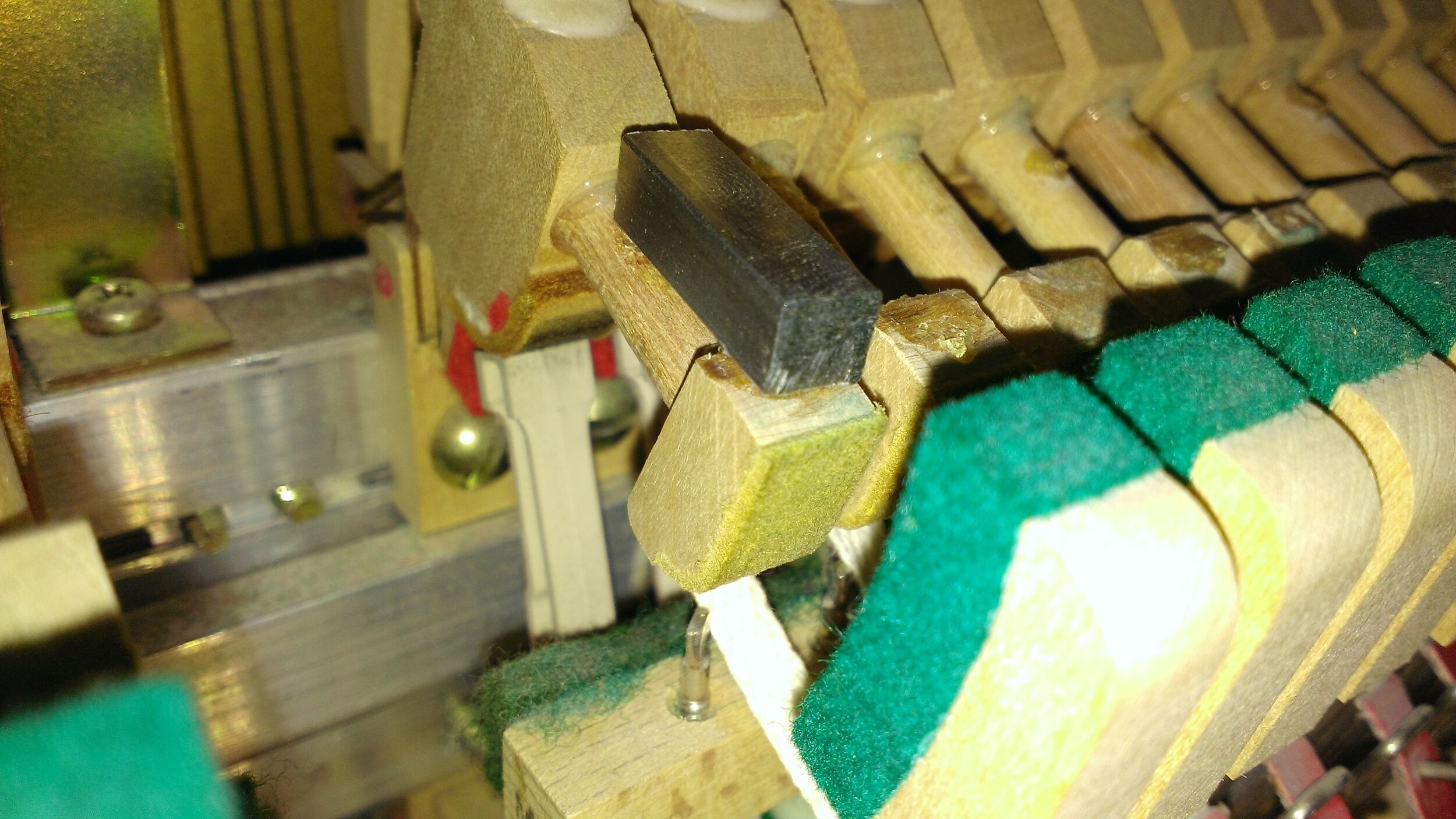Weight vs. Springs
I saw a repair on an upright the other day that caught my eye.
Apparently the hammer butt spring cord had broken and instead of replacing the silk cord someone added a weight to hammer butt as shown in the photo.
At first I thought that maybe they had ran out of cord. Or perhaps they have a silk allergy. But as I pondered this chosen repair I started to think about what effect using a weight there instead of a hammer butt spring would have.
Don Manino, the piano guru from Kawai, wrote a wonderful essay in an issue of the PTG Journal about upright springs. I've reached out to him for permission to reprint it in it's entirety but have yet to hear back from him.
I'll summarize it.
Mr. Manino gave a thorough layout of the function and importance of the "assist" springs in the two basic upright action types: Schwander (European and Asian, think Yamaha and German pianos) and American (think Baldwin).
American style actions have jack springs that are large and strong, butt springs that are long, and damper springs that are weak. Here, the jack springs are used as the primary assistance in repetition.
Schwander actions have small and weaker jack springs, short and weaker butt springs, but have strong damper springs. The damper lever spring and it's push-back on the whippen plays the more important role in repetition assistance.
So based on that springs and actions are like peas and carrots right?
Not so fast. Springs do have an inherent disadvantage.
The resistance they offer changes during their compression. Don Manino points out (This bit is second-hand, not from the article) that a Renner style repetition lever spring has an increasing resistance during it's compression. Conversely, a traditional butterfly spring decreases in resistance during compression. The style of spring matters just as much as it's strength further complicating the situation.
The obvious advantage of a weight is it's consistent resistance through the keystroke.So why aren't we using weights on action parts???
I don't have a real answer for this as I'm not an action designer. However, my suspicion is that a spring's active tension and it's dynamic compression affect is turned into an advantage in aiding repetition.
The springs, which are under tension to start, reach their full compressed state and upon being released launch the parts back into their rest position.
By contrast a weight has inertia, not tension, and it's initial movement probably lags, is slower, and is therefore less affective. As there's nothing actively pushing the action parts into their rest position I suspect there would be a greater chance of bobble too.
Don, you're a genius.
The final score...
Springs - 1
Weights - 0.

